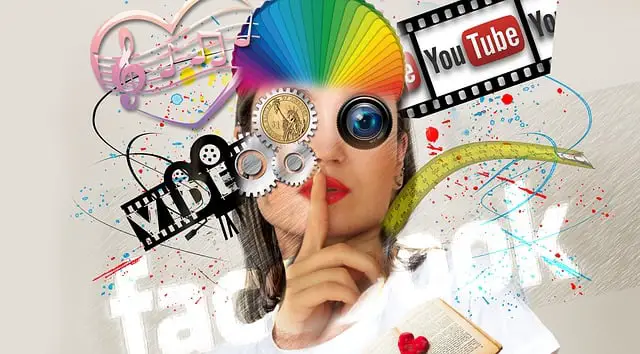Power of Humour as a Marketing Strategy
- 55% of CEOs stated comedy gets more attention than no humour, and 72% said it draws purchasers to new products.
- According to a 2017 Harris Interactive and Double Verify survey of 2,010 adults, 82% believe it is critical for brand ads to appear on safe, accurate, and trustworthy content, and 67% say they would stop using a brand or product if they thought its digital ads were false, objectionable, or agitating.
- Despite company executives’ claims that just 20% of their businesses’ outdoor commercials (TV, billboards) and 18% of their web ads actively employ humour, 90% of consumers recall hilarious ads.
- Kantar discovered that just 33% of advertisements contain comedy, a drop over the last two decades.
- 37% of TV commercials are hilarious, compared to 15% for print/outdoor and 28% for digital.
- Digital media advertisements differ by 12% for websites, 24% for Facebook and Instagram, and 30% for YouTube funny commercials.

Humor is more than simply laughing; it’s a strong tool for converting companies into relatable, memorable products. By incorporating humor into marketing, firms adopt a humanized character, generating emotional ties that go beyond the transactional basis of consumption. Humour has shown to be an effective marketing technique, transcending its status as a simple source of pleasure to become a strategic component in establishing emotional connections between businesses and customers. In this article, we will look at the use of humor in advertising and how it affects customer preferences, emotional connections, memory, and brand loyalty. The potential of effective humor in marketing to make a brand distinctive, noticed, recognized, and eventually bought is its defining characteristic. When customers find an ad interesting and shareable, it not only increases brand exposure but also has a ripple effect, reaching a larger audience via word-of-mouth.
Targeting Humour Properly
Surprisingly, comedy has international appeal, with little variances depending on gender or age throughout the globe. This allows marketers to use comedy as a communication tool across generations and cultures. Recognizing the nuances of humour, corporations are increasingly turning to professional comedians to create amusing advertisements. These professionals have a good awareness of what connects with different audiences, guaranteeing the greatest potential reach. Visual, slapstick, wordplay, and dark humour are some of the many types that may be deployed, each having its own distinct capacity to connect and resonate with a particular target audience. While TikTok’s comedy is fast-paced and sarcastic, Facebook and Instagram take a more personal approach, which helps to foster emotional relationships. comedy is not a one-size-fits-all idea, thus marketers must be mindful of the following developing trends to keep their comedy content relevant:
Consumer Preferences: Research, including Oracle studies, demonstrates the impact of humor in advertising. A stunning 90% of customers are more likely to recall a hilarious commercial, and 72% choose amusing businesses over competitors. Humour is important for brand recall and likability. When comedy is smoothly incorporated into marketing, it becomes an effective tool for establishing favorable connections and improving overall brand image.
Emotional Connection: The pleasurable feelings elicited by humor go beyond the instant laughing. Humour acts as a bridge to connect with customers on an emotional level. By triggering favorable emotions, it generates a good relationship with the brand, establishing a sense of connection and likeability. Positive emotions created by humor help to establish a strong brand image. Consumers who identify pleasant sentiments with a brand are more likely to create long-term relationships, make purchases, and stay loyal.

Enhanced remember and Purchase Intention: According to studies published in the Journal of Marketing, humor greatly increases remember. Brands that effectively use humor into their marketing get increased exposure in customers’ memory. Humour that is well-integrated may be an effective weapon for overcoming sales reluctance. When comedy effortlessly integrates with advertising goals, it successfully persuades the audience, resulting in a more responsive customer base. When used effectively, humor may be a powerful persuasive tool. It not only attracts customers’ attention, but also engages them, impacting their perception of the brand and, eventually, their purchasing inclinations.
Attention-Grabbing: Humorous advertising have the capacity to efficiently attract people’s attention. By establishing a distinctive tone for marketing communications, they encourage positive engagement with the audience. People are naturally attracted to information that will make them laugh or smile. Humour, as an attention-grabbing strategy, acts as a catalyst for increased customer interaction. Humorous advertising typically create an indelible effect on viewers that lasts long after their original exposure. This memorability helps to ensure the long-term success of humorous marketing.
Relatable humor appeals to viewers. Brands that appeal to universal experiences and common circumstances create a feeling of connection that extends far beyond the usual consumer-brand relationship. Humour makes a brand more accessible. When customers see pieces of their own life mirrored in hilarious content, the company transforms from a product or service to a companion on their journey.
Building Trust: Connection is essential for trust-building. When customers laugh with a brand, it fosters a feeling of connection. Shared humor provides a foundation for establishing trust between companies and their target audience. A brand that effectively establishes trust via comedy experiences enhanced loyalty. Consumers who trust a brand are more likely to be loyal, which contributes to the company’s long-term success.
Humour may be an effective differentiator in a crowded market. Brands that effectively use comedy stand out from the crowd, ensuring that their messages are remembered and discussed. Because of the distinctive quality of humor, hilarious advertisements are more memorable. The element of surprise, mixed with pleasant connotations, cements these advertisements in customers’ minds. Advertisements that use comedy become talking topics. Consumers share and discuss hilarious advertising, increasing the brand’s exposure and distinguishing it in a crowded market.
Cannes Lions’ New Humour Category and B2B Embracing Humor
The Cannes Lions, a famous forum for rewarding creative brilliance in advertising, has noticed the rising need for comedy by establishing a new category for it in its 2024 awards. This move reflects a growing appreciation of the critical role that humor plays in connecting with audiences and eliciting laughter. Consumer tastes are shifting, and firms are altering their strategies of engaging with their target demographic. The addition of the new comedy category at Cannes Lions demonstrates how the industry has recognized this trend, which represents a departure from traditional marketing tactics and reflects the rising desire for content that both informs and entertains. The cinema category at Cannes Lions 2023 saw a huge surge in advertising attempting to be amusing, indicating a departure from the customary serious tone. The data reveals a 43% rise over the previous year, indicating a significant shift in the sorts of advertisements that appeal to consumers. This spike reflects a growing appreciation of the power of comedy in creating memorable commercials. This trend implies that customers are not only responsive, but also capable of appreciating humour-infused material, pointing to a future in which laughing plays an important part in successful marketing.
The trend of incorporating comedy in marketing has spread beyond consumer-focused initiatives, making considerable inroads into B2B marketing. A famous example is Workday’s ‘Rock Star’ campaign, which was praised for its smart use of comedy. This shift away from traditional B2B seriousness suggests a greater impact on important buyers, with a more humorous and engaging approach taking center stage. Empowered end consumers are becoming more outspoken in B2B decision-making. This development has pushed B2B marketers to reconsider their methods and target a broader range of consumers. The greater appeal of hilarious marketing enables B2B firms to reach a larger audience, affecting not just important decision-makers but also end-users, who actively shape purchase decisions.
Pros and Cons of Using Humor in Marketing.
Benefits of Using Humour in Marketing
Attention-Grabbing: Humorous advertising efficiently draw customers’ attention. The element of surprise and pleasure differentiates the content in a crowded marketing area.
Humour has the natural tendency to become viral. People love to share funny material, which massively increases a campaign’s reach.
Increased Relatability: Funny companies are seen as more relatable. Humour draws into common experiences, making the company more accessible and creating a connection with the audience.
Better memory: The relationship between humor and increased memory is widely documented. People are more likely to remember information that made them laugh, which helps to improve brand recall.

Cons of Using Humour in Marketing:
Alienation Risk: Inauthentic efforts at humor may be seen adversely. Cracking jokes only for attention, without actual wit, risks alienating the audience.
Perceived Immaturity: Some businesses need a serious or clinical attitude, and comedy may convey immaturity. Marketers must assess industry suitability to prevent possible criticism.
Potential Offense: Humor is subjective, and what one audience deems humorous may offend another. Care must be taken to prevent accidentally alienating or offending the intended audience.
Industry Appropriateness: Certain businesses, such as healthcare, which deal with life-or-death circumstances, may not be appropriate for comedy. In certain circumstances, humor may undermine the brand’s professionalism.
While comedy has the ability to fascinate people, its effectiveness is dependent on its relevancy and appropriateness. Marketers must carefully evaluate their target demographic as well as the media backdrop to ensure that comedy connects rather than alienates. Humour acts as a conduit for developing emotional relationships. However, it must be effortlessly interwoven into the story in order to improve brand memory. Establishing a true relationship between comedy and the brand is critical to ensure long-term memorability. The use of humor should not detract from the major communication goals. Aligning comedy with brand messaging necessitates striking a fine balance to ensure that the humour matches the overall subject of the marketing effort. In an age when purpose-driven advertising has prevailed, marketers must question assumptions about when and where comedy is acceptable. While there is no one-size-fits-all answer, careful analysis of humour’s potential advantages is necessary for navigating its complexity. Humour may not be suitable for every brand or business. Recognizing its diverse possibilities and knowing the intricacies of when and how to employ humour necessitates that marketers approach its application strategically.
Fine-tuning the humorous approach.
Studies show that the impact of humor in marketing differs by sector. Not all goods or services are compatible with comedy, demanding careful examination of their suitability. The style of humor utilized may have varying effects on customers’ attention. Relatable humor, based on the audience’s own experiences, has a great impact on consumer attention, while incongruity-based comedy depends on paradoxical claims. While comedy may increase brand awareness, its abuse can harm the business. To minimize unforeseen negative outcomes, marketers must ensure that the humor is appropriate for the marketed product or topic. When employing comedy, timing and appropriateness are really important. Well-executed comedy may have a beneficial impact on people’s emotions and help companies differentiate themselves from competition. Humour has the ability to increase the virality of marketing initiatives on social media. Brands may enhance audience engagement and shareability by making their content amusing.
TikTok Logo Girl: TikTok designer Emily Zugay utilizes deadpan satire in her TikTok postings to ridicule and criticize renowned corporate logos, which has received largely favorable feedback. Notable firms such as TikTok and McDonald’s have even used some of her lo-fi redesigns, giving a lighthearted reprieve from the customary pessimism accompanying logo updates.
Burger King’s ‘Whopper Neutrality’ advertisement skillfully utilized comedy to express a hard problem. Burger King’s hilarious take on teaching internet neutrality using Whopper burgers demonstrated how the company may educate in a lighthearted and tongue-in-cheek manner.
KFC ‘FCK’: The fast food giant displayed clever and amusing crisis management with its ‘FCK’ apology campaign, which addressed a countrywide chicken shortage. KFC successfully defused tension by embracing comedy and transforming a public relations catastrophe into a viral hit.
IKEA’s inventive use of fun in a print ad, which included a concealed pregnancy strip for a crib discount, demonstrated how the business can combine innovation and humour. The campaign engaged people in a new manner, highlighting the brand’s whimsical nature.
Spotify ‘Wrapped’: Spotify’s out-of-home billboard campaign, ‘Wrapped,’ revealed consumers’ unusual listening patterns. Spotify not only demonstrated customer involvement but also made the company more relevant via comedy by transforming statistics into funny tales.
Metro Trains Melbourne: ‘Dumb Ways to Die’: An outstanding safety campaign that utilized comedy to deliver a serious message, resulting in a viral success. Thanks to its catchy tune and cheerful attitude, the ad effectively delivered an important safety message.
Please provide this link: Metro’s Dumb Ways To Die campaign.
PETA’s ‘Save the Whales’ campaign attracted reaction since people are instinctively protective when offended. The inflammatory billboard premiered in Florida in 2009, causing public outrage and subsequent replacement.
Burger King’s ‘Super Seven Incher’ commercial pushed the “sex sells” notion to the extreme. The model in the provocative advertisement was unaware of its usage and urged for a boycott after its publication.
Bacardi, ‘The Ugly Girlfriend’: The commercial, which attempted to appeal to a female audience, drew criticism because the notion of “the ugly girlfriend” making you look better aroused widespread outrage. The ugly buddy promotion was finally discontinued owing to poor feedback.
Pretzel Crisps ‘Too Thin’: In 2010, a commercial in New York City accidentally communicated a personal message about a person’s physique, particularly via the use of the term “you.” The campaign neglected to consider the possible sensitivity of its underlying message.
Humour has unquestionably emerged as a critical component in developing marketing tactics that not only fascinate but also leave an unforgettable impression on customers. The comeback of comedy in advertising, as indicated by the establishment of a dedicated humour category at Cannes Lions and a significant change in B2B marketing strategy, demonstrates its rising importance. The changing trends and industry awareness highlight the necessity for marketers to rethink their strategies, recognizing the powerful influence of laughter on brand resonance. However, the careful balance between humor and propriety remains critical to the success of such endeavors. Marketers are urged to investigate the immense potential advantages of humor, recognizing its ability to foster emotional connections and improve brand memory while negotiating the complex world of context and industry conventions. As the advertising environment evolves, those that grasp the art of humour with strategic elegance will be able to not only catch attention, but also establish long-term relationships with their consumers in the dynamic and ever-changing world of marketing.






